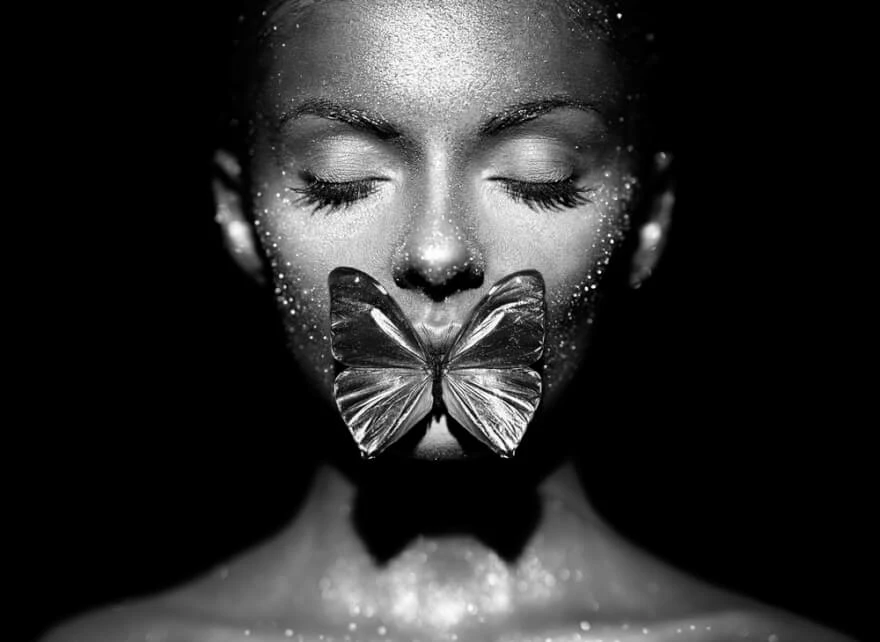Street portraiture: how to take pictures of strangers

- How to approach a stranger before making street portrait photography
- Technical tips for street portraiture
- Taking pictures of strangers – difficulties and solutions
There are different views on what street portrait photography is. This type of photography can be seen as a subgenre of street photography, where the lone person is usually in the foreground or is the main subject. There is also a relatively spontaneous aspect, because in this case it is a staged picture, but the photo made and improvised within a few minutes. It is also important that the person and the photographer do not know each other and, ideally, have contact with each other for the first time. This kind of photography is more difficult, but first of all, it is worth learning that this is a completely different type of street photography. In addition, each aspect has its own problems, depending on how much the photographer, for example, is more introverted or extrovert. Street portraiture is a completely different way of getting around the streets. It is necessary to walk more slowly and more carefully, look at a lot of people and all the time think about the question "In what perspective should the photographer shoot them?" Finally yet importantly, street portraits are a way of perceiving every day and social life.
How to approach a stranger before making street portrait photography

Many photographers say that street photography is a thrill at this special moment, and street portraits are high art. Speaking about street photography there are endless talks about what real street photography is. Photography lives from human emotions. Few people like cold and soulless street scenes. Yes, it is a kind of challenge and also risky. In particular, in many countries, people are almost hysterical about their privacy. But we must be sure that, with respect, courtesy and kindness, almost anything is possible. Street photography is a fine art and it brings many photographers real pleasure when they reach a well-composed picture or portrait of a person with emotions on the street. This is a high art, because in the studio you can control everything (light, posture, settings) and there is also infinite time. None of this can be done on the street. And this is what makes this type of photography so attractive.
And yet, the question of approaching a stranger is quite important in order to make a successful street portrait, or make it at all. It seems simple, especially in the beginning, if you look for people who are standing on the street around, waiting or sitting somewhere comfortable. The best approach with a camera is to be careful not to disturb those who work. Or one need to avoid making the request unwelcome to a stranger or causing problems for people. On the street, great attention should be paid to body language. This is a skill that improves with time and experience, along with the ability to predict whether someone will agree to be photographed. If a person is fully occupied, does not look happy or, obviously, not in the mood to talk to a stranger, nothing will work. Breaking the ice is not always easy. A sincere smile and polite speech can break down the barrier to further requesting a portrait photo. To begin with, one can start by establishing his presence in the field of view of the stranger, and then slowly but surely approach. The photographer needs to be like a harmless tourist who just takes photos. But continue to invisibly observe the real target and read the signals. If one has confidence and a positive feeling and attitude, then one should just ask if it is possible to take a photo. The stranger's answer is usually yes.

This is usually followed by a very short conversation (for example, a great hat or a great light here). Sometimes it's just a mutual nod to show if you're good with a photo. In rare cases, interesting conversations after photography can occur, which can also be the experience itself. Of course, failures while approaching also happen, and this is inevitable. One just needs to smile politely and move on. There are dozens of reasons for any refusal from strangers, and the photographer just needs to stay positive not only mentally but also physically. The expression on the photographer's face and how the photographer presents himself is the key to a positive response. The initial reaction of people is mainly based on appearance and personality, especially when the person is completely unfamiliar to them. A smile is like magic. Many people say that street portraits have more character if one takes them in an amazing moment, frankly. Smiling is natural, nice, and we all smile when we meet, especially friends and family. The human smile is charming, and in the photos it helps to build bridges. A smile is very important for people. Why exclude something so exclusive when shooting people? So, with permission, strangers' photography needs to be done quickly. No one thinks it's great if a photographer first tinkers with the camera and then takes countless photos. The settings need to be prepared in advance, and each shot needs to be correct, one to two photos, and that's good. Of course, there is respect for the person. Keep away at arm's length and do not swing the lens back and forth in front of your nose.
Technical tips for street portraiture

Here are some tips and tricks for cameras for making random people pictures. It is preferable to set the camera to Portrait mode and open the aperture as much as possible (f2.8 or better f1.8). Autofocus should be aimed at the nearest lens. ISO should be set to the lowest possible value, usually ISO 200-400. One of the most popular lenses for street photographers is the Olympus M.Zuiko 45mm F1.8 with fixed focal length lens in Micro-Four-Thirds format (90mm in full format). This lens on the camera allows the photographer to stand about two meters from the subject and take photos of the head and shoulders. This focal length has crucial advantages creating perfect street portrature: the open aperture creates only a small depth of field. As a result, it focuses softly and without distortion on the face and captures only the (annoying) blurred background (so-called bokeh). Anything shorter than 50 mm creates unattractive distortions in close-up portraits (huge noses or moon faces). At a distance of more than 100 millimeters, the photographer will have to go too far and lose "closeness" to the person. The black and white format of photography is especially suitable for street portraits when photographing strangers. This draws attention to facial expressions and reduces anxiety.
Taking pictures of strangers – difficulties and solutions
You need to be bold and honest to take pictures of strangers. Experienced photographers appeal to people with their own unique approach, they intuitively manage to win the trust for personal photography. The most important thing is to be genuinely interested in the person who is the subject of the photo. Inspiration for good street photography can be clichés, long beards, tattoos, a special expression, many shopping bags, interesting clothes, general style and much more. Every photographer has to catch it intuitively. It can also be a special charisma. Something about this person is interesting, and it should appear in the picture later. Another nuance is that it is much easier to photograph men than women. This may be because they care less about their fuss, hairstyle or makeup. It is better to walk alone (not in a group of photographers), the level of success in that case increases significantly. People also respond positively to smaller cameras and are more wary of large SLR cameras with long lenses.

Street photography is a diverse and very exciting genre of photography. However, photographing people in everyday life is not easy. On the one hand, as already mentioned, it takes a little courage, but on the other hand, one also needs talent in many areas of photography. It also takes a lot of time and patience, and hard work at the right time at the right time is obligatory. Nevertheless, all this is possible. Perhaps street photography is the most demanding of all. Because street photography, like wildlife photography, requires patience, perseverance and luck. What else is required is a quick and intuitive reaction, as in sports photography. As in travel photography, the photographer needs to be able to tell stories. And as in landscape photography, one needs to act thoughtfully and creatively to give the viewer a compelling and exciting image.
A good street scene requires a well-defined motive. All the rules of art, such as the rule of thirds, leading lines, the use of negative space, symmetry, etc. are still applied in taking pictures of strangers. A good photographer should try to tell the story with his drawing, create the photos that will make the viewer stop and provoke thoughts and questions. These are all signs of good street photography. It is debatable whether street images should contain people. Fundamental supporters of this idea insist on the fact that every street photo should involve people. Some photographers believe that street photos do not need people, but there should be only a hint that someone was there. For example, these may be shadows that provide food for thought. So one can only guess about people. It's a good idea to take a photo of the thing left behind. Such photos leave the viewer puzzled, and encourage the search for history outside the frame.

There is another view on whether street photography should be spontaneous and people in it should not know about the photo. Many professional photographers disagree with this statement. Some people believe that street portraiture is another genre of portrait photography. But here is the opposite opinion. Street portraiture requires interaction with the subject. Interacting with strangers requires a lot of courage and can be a deterrent at first. Another example of spontaneous street photography occurs when a photographer comes into eye contact with his subject. Idealists will deny this fact, and argue that the moment is lost and the scene changes. So many people make it a rule not to make eye contact with an object. However, if this person notices the photographer and looks into the lens just as the shot is being taken, no one will delete this photo. Such casual encounters often give the picture a humorous component. In addition, eye contact, as a rule, gives more closeness to the picture.

Returning once again to the equipment for street photography, it should be emphasized that in this case less means more. It's much easier to approach unnoticed with a small camera. This does not mean that one cannot take street photography with a single lens reflex camera. But this will highlight the photographer much more and will cause the loss of necessary anonymity. Experience is the thing that will teach you to take the right position for a photo. Activity on the street is spontaneous. By removing the scaling component from the process, it becomes easier to capture fleeting moments.
Having comfortable shoes during street photography is almost as important as camera equipment. On the day of street photography, the photographer can cover from ten to fifteen kilometers. Appropriate, inconspicuous clothing is also important if there is no need to attract too much attention. Photographing in public places is allowed in most countries and can be done without any problems. This, of course, applies to Western Europe, the United States and Canada. Basically, it is possible to accomplish photography of everything that is public or visible from public land. Nevertheless, even if the photo is taken in a public place, people's privacy should be respected. For example, photographing a bedroom from the street is unethical and possibly even illegal. If there is no certainty, it is better to study local legislation to avoid problems.

Respect is the main requirement of street photography. If someone does not want to be photographed, it is better to apologize and look for another topic. The streets are full of interesting people, the next motive is waiting around the corner. A smile makes wonders. If someone notices a photographer after they are photographed, it is worth smiling and nodding. Most likely, the subject will smile back, and both will go their own way. No photo is worth confrontation. With friendliness and openness, one can go much further in street photography. Photographing children is ethically difficult and is a very sensitive topic. Before taking a photo, it is obligatory first to ask permission from the kid's parents or guardian. If they are not around, a photo should be taken very carefully and preferably, that kids face in the composition should be hidden. There are a lot of opinions about photography of the homeless or people who find themselves in compromised situations. But first, one need to think about the ethical side of such a photo. Such pictures are left to the discretion of each photographer individually. However, to begin with, one need to ask yourself, being in such a situation, whether one would like to be photographed.
Summarizing the material expounded above, is possible to form some tips for beginners or those who have little experience of how to photograph people on the street. From the beginning, while there is no understanding of how to approach a stranger, it is better to take photos at a certain distance. Initially, taking a picture outside the window is allowed, taking a photo of the back of an unknown people. Later one can proceed with a photo of the animals, which can later turn into a conversation with the owner and as a result get a good street portrait photograph. Practice doing strangers photography on street artists is as well quite a good idea, they are usually not against shooting. Due to lack of lighting, time or colors, street photography does not always look beautiful, but it is important to remember that the main thing is that the photos should be interesting and contain the soul. Perfect street photo requires preliminary scene preparation, selection of a place where there is good lighting and background, a place where the overall picture is beautiful. Then the photographer must wait until the right character appears for the perfect photo.

The more information there is about street photography, the more confident the photographer will become. To master street photography, one should not go too deep into its definition. Instead, it is better to look at street life as it is to be seen, from an individual perspective. It is very interesting to experiment with different focal lengths until one finds a personal correct solution. Playing with street lights is difficult, but it can illuminate street objects properly and correct for corresponding desirable photo. However, most importantly, street photography should be fun. If there is a desire to improve the photography skills and face the challenge of capturing the emotions, gestures and moments that tell a story, one should definitely try this genre of photography. Moreover, in the end it will not bring disappointment. In fact, it is extremely enjoyable to capture street life in such a way that everyday moments seem extraordinary. With the necessary experience, photography skills will improve. As a result, it will be possible to apply what has been learned during street photography to other areas of photography.
Co-founder of RetouchMe. In addition to business, he is passionate about travel photography and videography. His photos can be viewed on Instagram (over 1 million followers), and his films can be found on his YouTube channel.
Moreover, his profile is featured on the most popular and authoritative resource in the film industry — IMDb. He has received 51 international awards and 18 nominations at film festivals worldwide.

with RetouchMe














